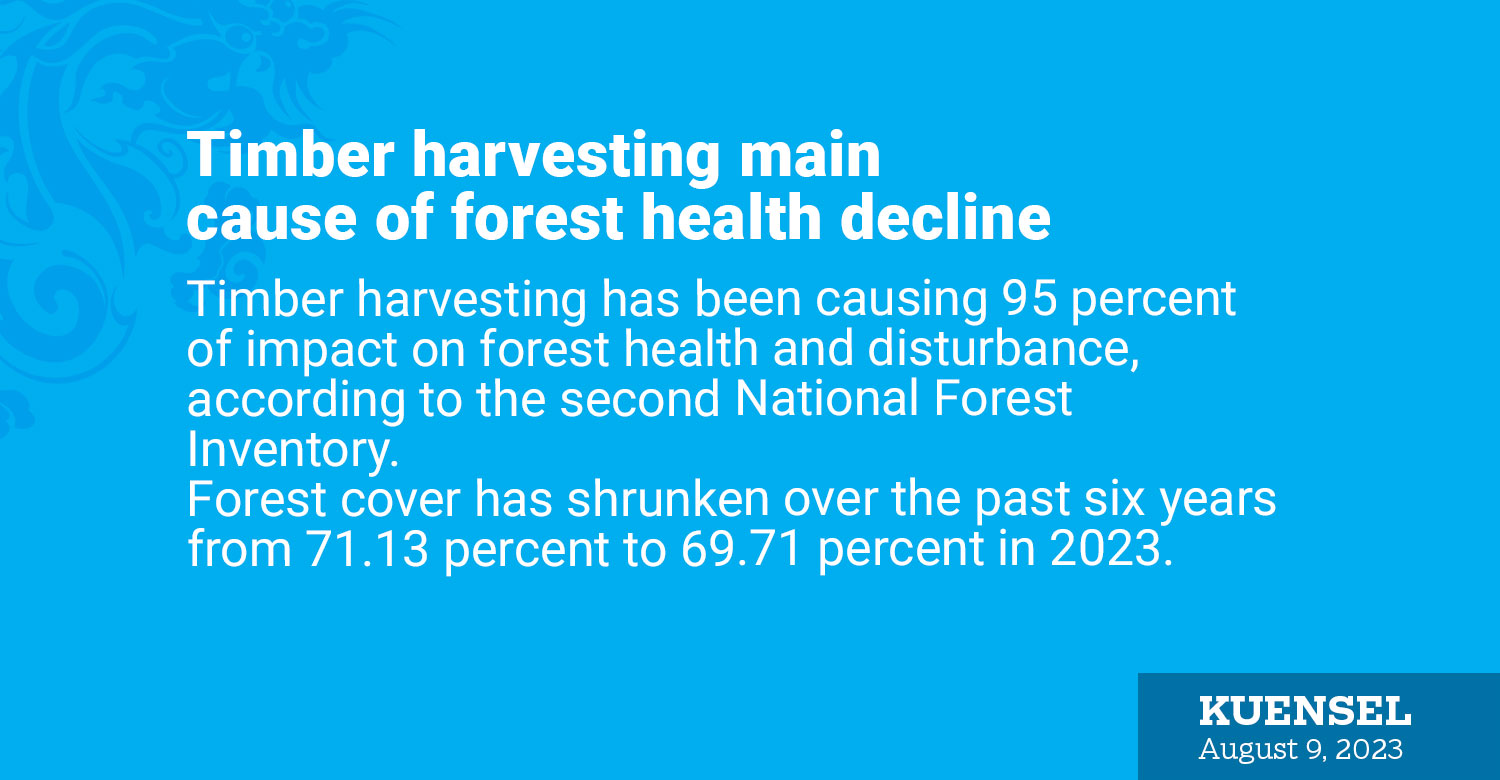
Timber harvesting has been causing 95 percent of impact on forest health and disturbance, according to the second National Forest Inventory.
Forest cover has shrunken over the past six years from 71.13 percent to 69.71 percent in 2023.
According to the report, increasing developmental activities and conversion of private forest land to other uses have led to an overall decrease in forest coverage.
Evidence of timber harvesting has been recorded for 634 plots in 330 cluster plots over the country. The records are restricted to the felling evidence within the plot only and extraction in the vicinity of the plot has not been considered.
Deputy chief forestry officer of Forest Monitoring and Information Division, Kinley Dem said that deforestation and forest degradation in the form of timber harvesting, pest and disease, forest fire and allotment of land for developmental activities were recorded as major causes of decrease in forest in the NFI.
“Generally, forest disturbance disrupts the forest ecosystem resulting in mortality and migration of species and an impediment to other zones,” she said.
The decrease, she said, is a serious concern especially when the Forest Resource Potential Assessment 2013 recommends only 11.27 percent of the total geographical area to be economically potential for sustainable forest management.
Timber-felling is restricted near settlements, whereby the timber for rural house-building and other uses is mainly allotted following the selection system.
The report states that forestry clearance has been issued for the allotment of 71,241.95 hectares of state reserve forest for developmental activities. Furthermore, 1.57 million metre square of timber has been allotted directly by the forest department from 2016 to 2022 to meet the rural and commercial needs of the people, timber allotted to the Natural Resources Development Corporation Limited (NRDCL) and removal of forest produce from private registered land.
The Energy and Natural Resources Ministry’s report states that although the forest coverage has declined, the carbon sequestration capacity for Bhutan increased to 11 million tonnes from 9.6 million in the last six years.
Meanwhile, the records with the department show that mistletoe is widespread among the pest and diseases – which was recorded as 80 percent during the forest inventory towards forest health and disturbance.
Forest fire was one of the major forest disturbances to forest health, especially in coniferous forests. On average more than 7,000 hectares of forest are burnt every year in between 1994 and 2020, emitting 84.489 gigagrams of carbon dioxide. As per NFI report, 61 cluster plots observed forest fires in between 2021 and 2022.
Bhutan recorded a total of 1,008 million trees and 523 million saplings during the second NFI. During the inventory, 710 species of trees were recorded in the country.
The number of trees increased by 26 percent from 2015. The country recorded an increased proportion of smaller-sized trees, with more than 72 percent of the trees estimated to be below 30cm.
Dzongkhag wise, Wangdue has the greatest area under forest cover (258,969.43 ha) followed by Zhemgang (223,067.45 ha) while Tsirang has the smallest forest cover of (54,380.94 ha).
The National Forest Inventory (NFI) is the systematic collection of data and information for the assessment or analysis of forest resources at the national level.












